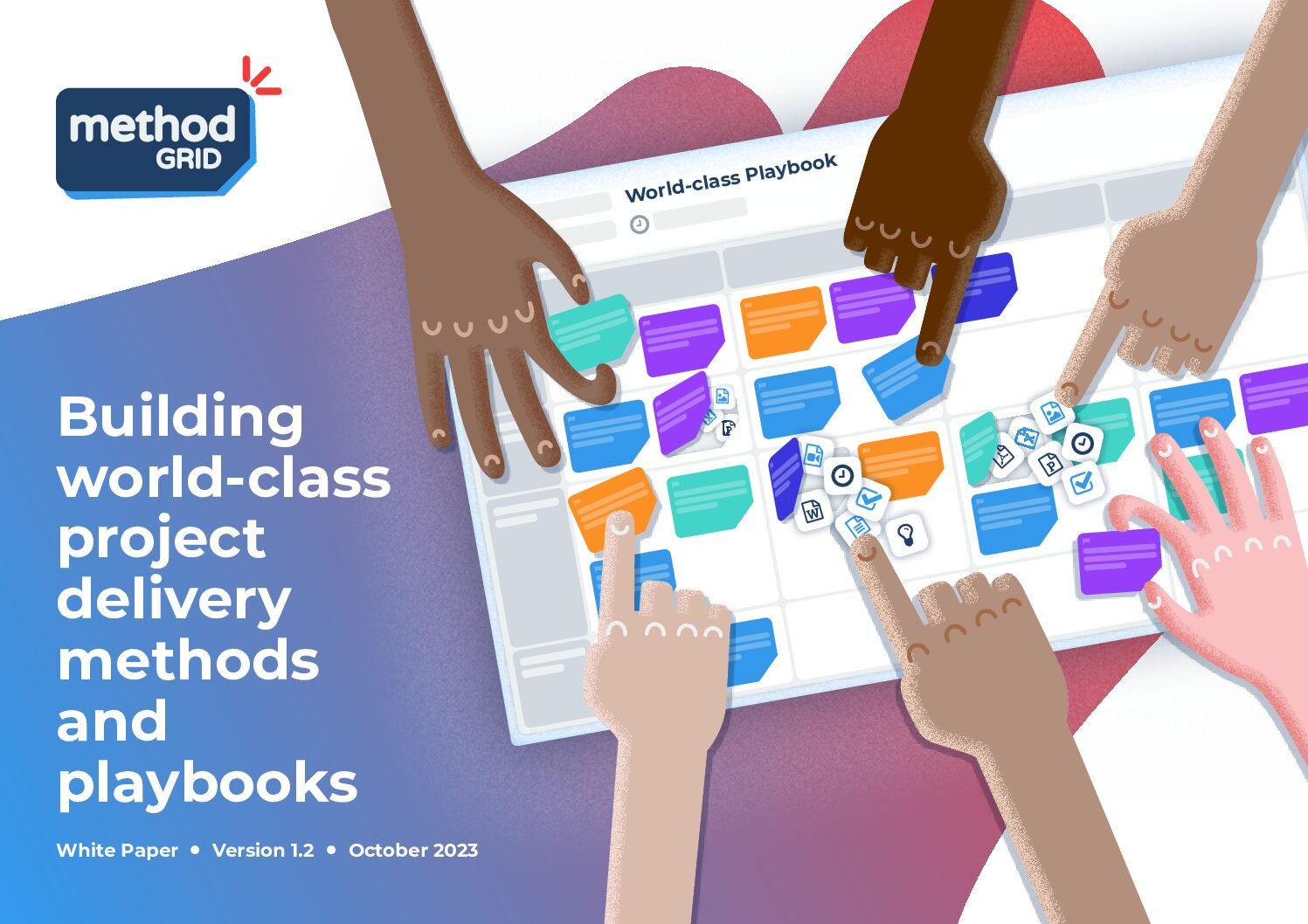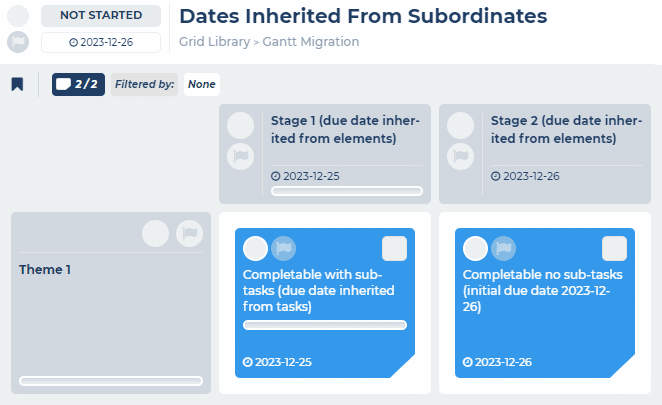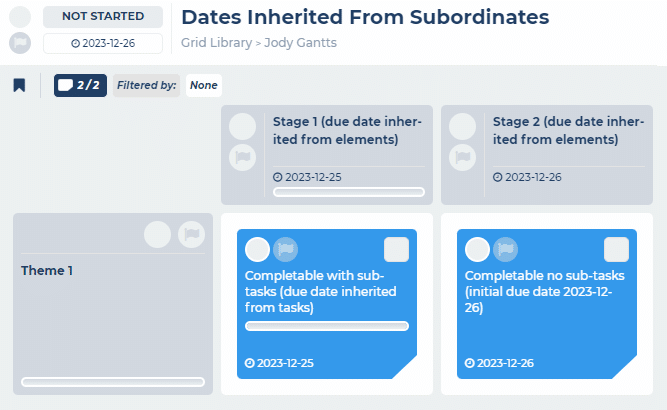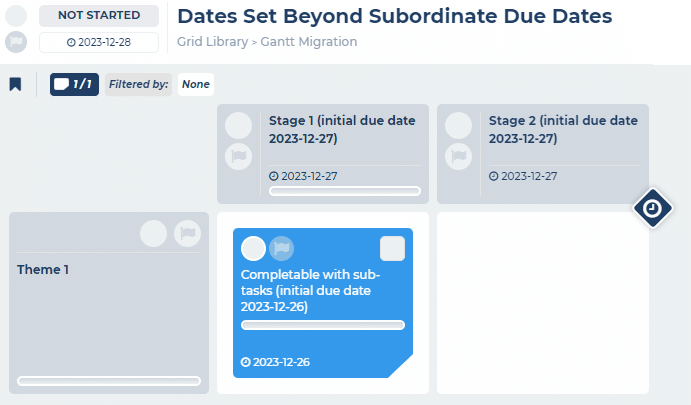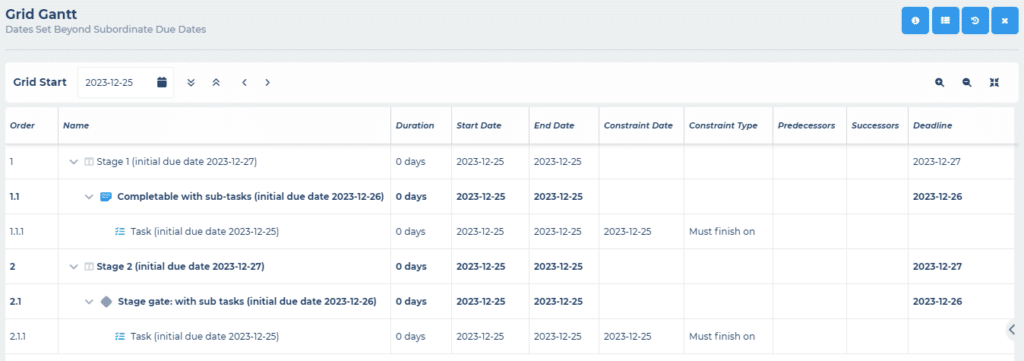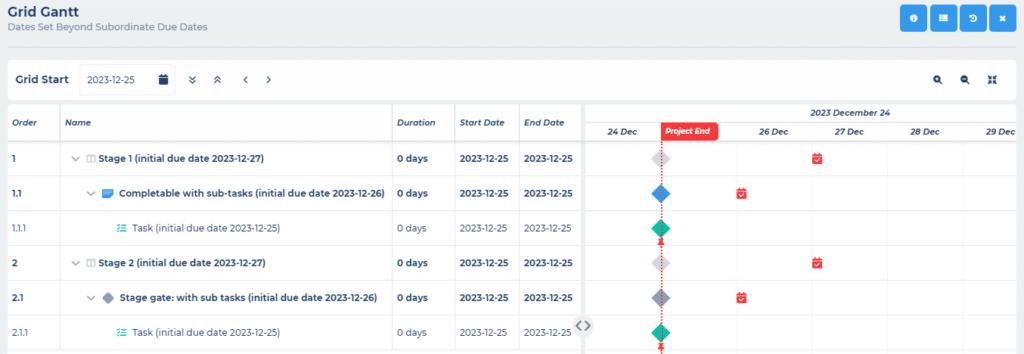In the next few weeks, we will be releasing a new Gantt view and scheduling engine for your grids. This new way of scheduling dates includes significant changes to the way dates currently work in your grids.
The way you schedule dates in your grids is changing, from the old simple due date with inheritance method to an advanced scheduling engine with a Gantt view. In order to prepare you and your team for this change, please read these pre-release notes carefully.
Note: the items highlighted in red text will be changing, the changes are indicated by the green text.
**We will be running a Gantt webinar with a full Q&A session on Thursday 16th November 2023 at 1pm. You can watch the recording of this webinar here.**
Date Scheduling & Inheritance
Tasks
Old > Due dates are independent and can be set to any future date.
New > Due dates (end dates) are independent and can be set to any date unless impacted by a constraint or dependency.
Elements
Completable (with sub-tasks)
Old > Due dates are inherited from subordinate tasks, but can also be independently set to any date beyond the last subordinate task due date.
New > Due dates (end dates) are inherited from subordinate tasks, they CANNOT be independently set.
Completable (no sub-tasks)
Old > Due dates are independent and can be set to any future date.
New > Due dates (end dates) are independent and can be set to any date unless impacted by a constraint or dependency.
Information only
Old > Cannot be scheduled.
New > Cannot be scheduled.
Stage Gates
With sub-tasks
Old > Due dates are independent (not inherited from subordinate tasks) and can be set to any future date.
New > Due dates (end dates) are inherited from subordinate tasks, they CANNOT be independently set.
No sub-tasks
Old > Due dates are independent and can be set to any future date.
New > Due dates (end dates) are independent and can be set to any date unless impacted by a constraint or dependency.
Stages
With sub-elements / sub-gates
Old > Due dates are inherited from subordinate elements, but can also be independently set to any date beyond the last subordinate element due date. Due dates are not inherited from subordinate stage gates.
New > Due dates (end dates) are inherited from subordinate elements and stage gates, they CANNOT be independently set.
No sub-elements / sub-gates
Old > Due dates are independent and can be set to any future date.
New > Due dates (end dates) are independent and can be set to any date unless impacted by a constraint or dependency.
Grids
With sub-stages
Old > Due dates are inherited from subordinate stages, but can also be set to any date beyond the last subordinate stage due date.
New > Due dates (end dates) are inherited from subordinate stages, they CANNOT be independently set.
No sub-stages
Old > Due dates are independent and can be set to any future date.
New > Due dates (end dates) are independent and can be set to any date unless impacted by a constraint or dependency.
Data Migration
When we migrate your due dates to the new system, we will set your old due date to the “constraint date” in the new system with the constraint type set to “must finish on”. This in turn will schedule these tasks, elements/gates, stages and grids as follow:
- Constraint date = old due date
- Constraint type = must finish on
- Duration = 0 days
- Start date = constraint date (old due date)
- End date = constraint date (old due date)
Example – Dates Inherited From Subordinates
This example illustrates the migration of a grid with simple due date inheritance from subordinate tasks/elements/gates/stages.
Old > Below is a grid with the elements, stages and grid due dates being inherited from their subordinate tasks/elements/stages. The subordinate task due dates are set to 25 Dec 2023:
Click the image to view a larger version.




